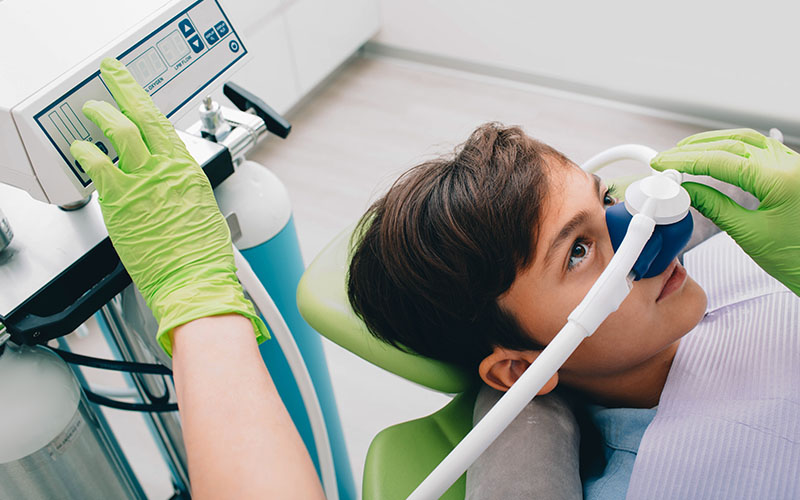Introduction
When it comes to dental visits, many people experience anxiety and fear, often leading to avoidance of much-needed dental care. However, with advancements in dentistry, a solution known as “sedation dentistry” has emerged, offering a way to address dental anxiety and create a more relaxed experience for patients. In this article, we will explore the ins and outs of sedation dentistry, its benefits, various methods used, and why it’s becoming an increasingly popular choice for those seeking dental treatments.
1. What is Sedation Dentistry?
Sedation dentistry involves the use of medication to help patients relax during dental procedures. It is particularly beneficial for individuals with dental anxiety or phobia, making it easier for them to undergo essential treatments without stress and discomfort.
2. The Prevalence of Dental Anxiety
Dental anxiety is more common than you might think, affecting millions of people worldwide. The fear of dental visits can be so intense that it leads to avoiding dental care altogether, which can result in severe oral health issues. Sedation dentistry offers an excellent solution to overcome this fear and maintain good oral hygiene.
3. The Benefits of Sedation Dentistry
Sedation dentistry comes with several advantages:
- Reduced Anxiety: Patients experience a sense of calm and relaxation.
- Pain Management: Sedation can help minimize discomfort during procedures.
- Time Efficiency: Dental treatments can often be completed in fewer visits.
- Increased Comfort: Patients can avoid jaw strain and discomfort from extended procedures.
- No Memory of the Procedure: Some forms of sedation leave patients with no recollection of the treatment, further reducing anxiety about future visits.
4. Types of Sedation in Dentistry
4.1 Nitrous Oxide (Laughing Gas)
Nitrous oxide is a mild sedative administered through a mask over the nose. It induces a feeling of euphoria and relaxation, and its effects wear off quickly after the procedure.
4.2 Oral Sedation
Oral sedation involves taking a prescribed medication before the procedure to induce a state of deep relaxation. This form of sedation allows patients to remain conscious but in a serene state.
4.3 Intravenous (IV) Sedation
IV sedation is delivered through a vein, leading to a more profound level of sedation. Patients might feel drowsy and might not remember much of the procedure afterward.
4.4 General Anesthesia
General anesthesia is used for complex or invasive procedures. Patients are unconscious throughout the treatment and wake up after it is complete.
5. The Sedation Dentistry Process
5.1 Initial Consultation and Evaluation
During the first visit, the dentist will assess the patient’s medical history and discuss any concerns or fears related to dental treatment.
5.2 Tailoring the Sedation Approach
Based on the evaluation, the dentist will determine the most appropriate sedation method and dosage to ensure the patient’s safety and comfort.
5.3 During the Dental Procedure
The chosen sedation method will be administered, and the dental procedure will commence once the patient is fully relaxed.
5.4 Post-Treatment Care and Recovery
After the procedure, the patient will be monitored until they are alert and ready to leave. A responsible adult should accompany the patient home, as the effects of sedation may persist for a short while.
6. Finding the Right Sedation Dentist
Selecting a qualified and experienced sedation dentist is crucial for a safe and positive experience. Patients should research potential dentists, read reviews, and schedule consultations to discuss their needs.
7. Is Sedation Dentistry Safe?
Sedation dentistry is generally safe when administered by a trained professional. Dentists carefully monitor patients throughout the procedure to ensure their well-being.
8. Debunking Myths about Sedation Dentistry
8.1 Sedation Dentistry is Only for Extreme Cases
Sedation dentistry can benefit anyone who experiences dental anxiety, regardless of the severity.
8.2 Sedation Dentistry is Expensive
The cost of sedation dentistry is reasonable and varies depending on the type of sedation used and the complexity of the procedure.
8.3 You Can’t Drive Home After Sedation
While some forms of sedation require a responsible adult to drive the patient home, others, like nitrous oxide, wear off quickly, allowing the patient to drive themselves.
9. Who Can Benefit from Sedation Dentistry?
9.1 Dental Anxiety and Fear
Individuals who feel anxious or fearful about dental visits can find significant relief through sedation dentistry.
9.2 Gag Reflex or Sensitive Teeth
Patients with a strong gag reflex or sensitive teeth can benefit from the relaxation induced by sedation.
9.3 Complex Dental Procedures
For lengthy or intricate dental procedures, sedation can help patients endure the process more comfortably.
Conclusion
Sedation dentistry has revolutionized the dental experience for those with dental anxiety and other concerns. By providing a stress-free environment, patients can maintain their oral health without unnecessary fear or discomfort. If you’ve been avoiding essential dental care due to anxiety, consider discussing sedation dentistry with your dentist to take the first step towards a healthier smile.
At Lotus Dental Wellness, your oral health is our priority, and we strive to create beautiful smiles while making you feel at ease throughout the process. Take the first step towards overcoming dental anxiety by scheduling an appointment with us at Lotus Dental Wellness in West Edmonton today.
